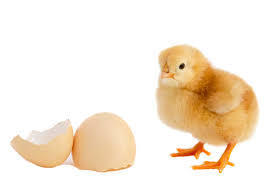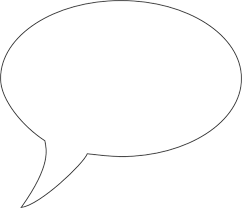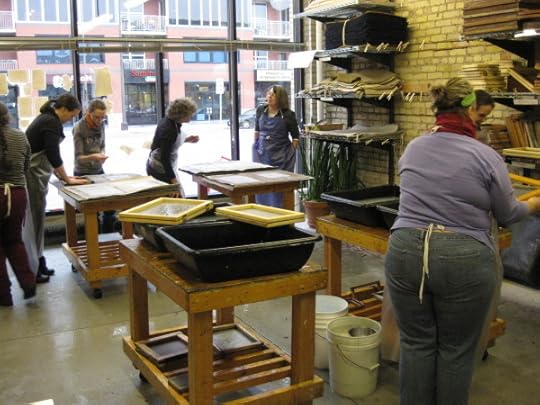
A replica of Cai Lun, the man credited with the invention of papermaking in China.
I was talking with an esteemed colleague the other day, and she put something into words that has been bugging me for some time. She was at a celebration for a book arts organization and couldn’t help comparing our field (hand papermaking) with book arts. There are many established book arts programs around the country, there are libraries that specialize in artists’ books, there are book arts centers and hundreds of artists who call themselves book artists. And why, she pondered, isn’t it the same for paper, a field that became popular at about the same time? Since I am involved in both art forms, I’ve decided to ruminate on this.

The Crane Museum of papermaking in MA. Crane still makes 100% rag paper today.
But first, let’s set the stage: I’m not saying that paper isn’t respected. There are several colleges and universities with paper programs, and there are even paper museums (come to think of it, are there any book art museums)? These programs, in general, are part of other departments (this may be the case with many book art programs as well, but I’m pretty sure that there are many dedicated Book Art programs). There are libraries with paper collections, but I’d venture to say that the number of libraries is quite small in comparison to those that collect books (well, that seems obvious – libraries collect books, but I’m referring to artists’ books). There are also hundreds of paper artists (I’m a member of two organizations, each with 400+ members); Hand Papermaking Magazine is the journal for the field; and there are a variety of institutions dedicated to handmade paper, such as Dieu Donné Papermill in NYC and the Robert C Williams American Museum of Papermaking in Atlanta. There are also membership organizations: the Friends of Dard Hunter is a national organization, and IAPMA is international. Looking back at this list, I’m thinking WOW, we’ve come a long way!

Ok, so which came first? The chicken or the egg, I mean paper or books? I think it is obvious that paper came first, but I guess that depends on what you call a book, doesn’t it? Writing came before paper or books, so if the definition of a book includes the cave painting that depicts a story, perhaps the book did come first. But that is neither here nor there in the quest for the answer to my question: Why is book art more recognized than hand papermaking?
Here are some of my ideas, and I hope that you will add yours in the comments below!
Are books more accessible than paper? I have tried many tactics when introducing myself to non-artists. It always takes a few sentences, and I don’t think that there is a distinguishable difference in reaction when I introduce myself as a book artist or a paper artist. However, I do think that people can more easily understand that you can make a book (haven’t we all made some sort of book in school) than the fact that you can make a sheet of paper (I never made a sheet of paper in school, although I do think it is more prevalent today).
Have you seen this papermaking video on Sesame Street?
Is paper too versatile? Paper can be a substrate, a sheet in and of itself, a sculpture, a pulp painting, a book, an installation, and more. Perhaps, since it can be presented in so many ways, it isn’t going to become famous in and of itself.
Is paper too commonplace? The digital age aside, we use and touch paper more than we do books (not to mention that most books are made of paper). And let’s face it, paper is cheap and disposable; a book holds more perceived value. Paper is everywhere, so it becomes invisible.

Is it the craft vs art thing? I’d love to see a thought bubble for the people I tell that I make art with paper. I mean, what are they really thinking? I’m guessing that they are reminded of the handful of shredded recycled paper they put into a blender and made into a crude sheet of paper in grammar school. That is recycling, and yes its super cool, but it takes a bit more than that to educate someone about paper as an art form.

The paper studio at the Minnesota Center for Book Arts.
Is papermaking accessible? To make professional paper, you need specialized equipment. To a certain extent, this is true for book arts as well, but I think that the upfront papermaking costs are higher (a new Hollander beater, for example, runs $10,000). And in order to make paper, you need a suitable facility – one that can get wet. I often wonder what students of mine do after they leave me and the facility where I’m teaching. Many of them will will never make paper again.
I’ve spent my entire career trying to promote all levels of papermaking through my teaching, how-to books, exhibiting, placing my work in public spaces and public and private collections, and through social media, including this blog. I will continue to do this because I believe that paper is important in more ways than one!
And as you can see, I’m interested in the BIG (paper) PICTURE. I’ve just scratched the surface here. I’d love to hear your thoughts. Please leave a comment below!
 newest »
newest »
 newest »
newest »
 Your passion is palpable. I now want to learn from you. I adore paper, and have never made any myself - I always say ... someday, someday.
Your passion is palpable. I now want to learn from you. I adore paper, and have never made any myself - I always say ... someday, someday.
 Suzanne wrote: "Your passion is palpable. I now want to learn from you. I adore paper, and have never made any myself - I always say ... someday, someday."
Suzanne wrote: "Your passion is palpable. I now want to learn from you. I adore paper, and have never made any myself - I always say ... someday, someday."







